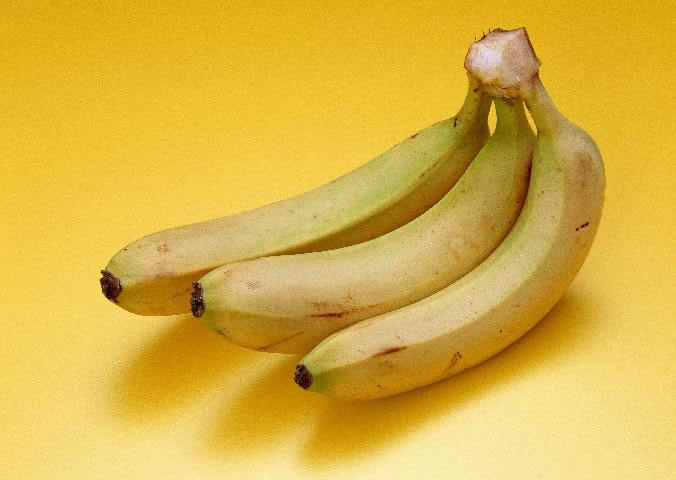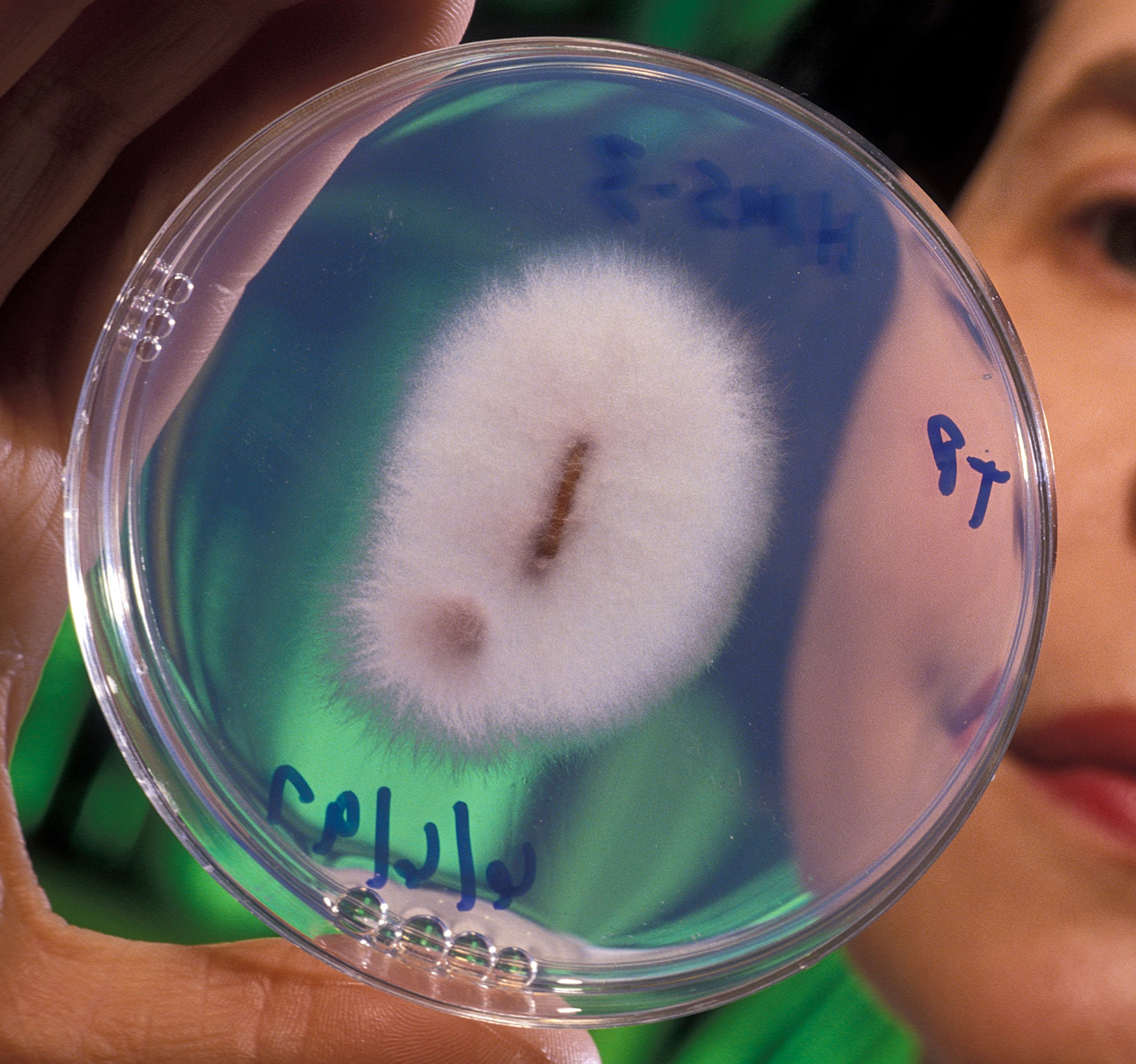By MP
 |
| Gros Michel Bananas: This was your Grandfather’s banana. |
rumors that food companies based the artificial banana flavor on Gros Michel bananas, explaining why banana flavor does not quite taste like “real” bananas. Legions of banana enthusiast even gave the Gros Michel banana a score of 9 out of 10. If these are true, one wonders why the banana importers of yore abruptly decided to switch to the seemingly inferior Cavendish.
 |
| Cavendish Bananas: This is your banana. |
 |
| Fusarium oxysporum sp. cubense. It may kill your bananas. |
In a plantation scenario, the wilting of a single banana plant is not a big deal. The problem however, is that all banana plants of the same cultivar are essentially the same organism. Bananas do not reproduce sexually; instead, it propagates itself through budding. From this prospect, it is easy to imagine a situation in which a single infection wipes out a whole plantation. Since each tree has the same genetic makeup, a disease that afflicts one tree threatens to wipe out a whole drove. That is exactly what happened; as stated earlier, by the middle of the 20th century, Gros Michels were almost extinct. In an effort to save the banana industry, growers shifted to a then recently characterized cultivar, the Cavendish. This cultivar, while not as sweet as Gros Michel, resists Panama disease. By the next decade, the banana industry has shifted to cultivating Cavendish bananas, and the world banana industry averted disaster.
 |
| A banana tree infected with Fusarium. |
If a new race capable of infecting Cavendish appeared, wouldn’t it make sense to look for a new banana cultivar? Banana planters agree, however, there are several hurdles to this plan. The most obvious one is the question as to who determines the next big banana cultivar. Like any other major fruit, various cultivars exist that exhibit varying degrees of sweetness, size, and texture. Bananas aside, F. cubense also acts as a major hurdle in this process. F. cubense strains are not necessarily limited to single banana cultivars. Race 1, for example, also infects Pome bananas (4). There have been reports that Race 1; the Gros Michel killer, survives in the trunks of Cavendish bananas. In addition, Race 4 F. cubense also infects other cultivars, including Race 1 susceptible bananas (4). Finding a truly resistant cultivar is not an easy task.
Is the banana fruit doomed then as some pundits purport? Are banana enthusiasts fated for despair? Perhaps, but it is also important to note that there are countermeasures that can be utilized in order to combat Panama disease. Fusarium wilt as a whole is a problem caused by flaws in the agricultural system. The problem arises from the widespread cultivation of genetically identical plants. This problem is not limited to the banana industry. Several major food crops such as wheat, corn, and rice are cultivated without any genetic diversity. As a result, these crops are susceptible to the rise of novel pathogen strains. These crops are in danger of widespread losses that occurred with the Gros Michel banana early in the 20th century. Perhaps it would be prudent to rethink the way we do agriculture. If this continues, a repeat of the banana debacle is sure to occur. Not only will your bananas be different from your kids, they might not even have bananas to enjoy.
| Lady’s finger bananas. Do you want these to be your children’s bananas? |
(1) Can This Fruit Be Saved? Pop Sci. Available at: http://www.popsci.com/scitech/article/2008-06/can-fruit-be-saved. Accessed December 4, 2013.
(2) Snyder WC, Hansen HN. The Species Concept in Fusarium. Am J Bot. 1940;27(2):64. doi:10.2307/2436688.
(3) Rombouts JE. The micro-organisms in the rhizosphere of banana plants in relation to susceptibility or resistance to Panama Disease. Plant Soil. 1953;4(3):276–288. doi:10.1007/BF01343843.
(4) Sutherland R, Viljoen A, Myburg AA, Berg N van den. Pathogenicity associated genes in Fusarium oxysporum f. sp. cubense race 4. South Afr J Sci. 2013;109(5/6):10 Pages. doi:10.1590/ sajs.2013/20120023.
(5) Zhangyong Dong YY. Isolation, expression and comparison of a pectate lyase produced by Fusarium oxysporum f. sp. cubense race 1 and race 4. Afr J Biotechnol. 2011;9:8984–8990.
No comments:
Post a Comment